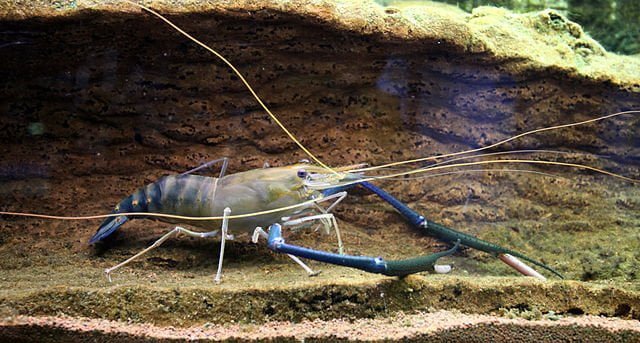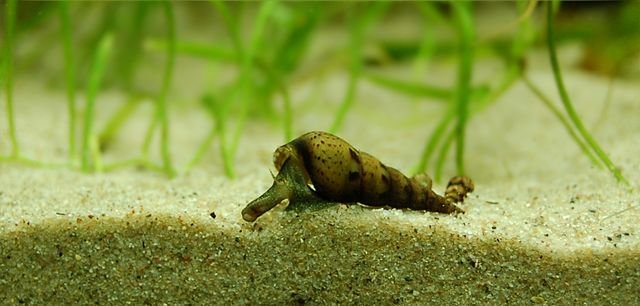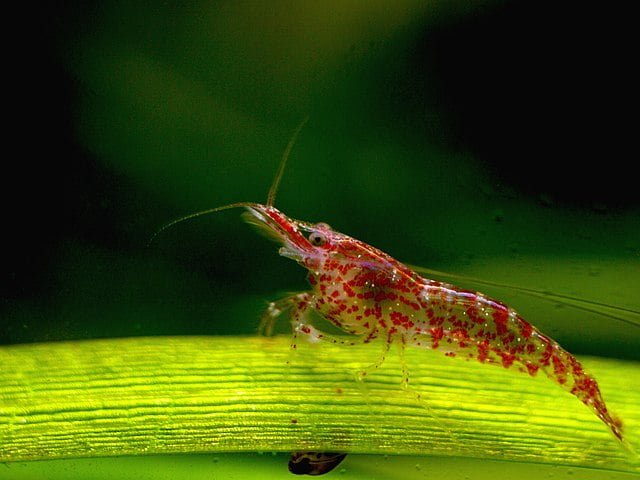
The freshwater giant prawn, also known as Malaysian prawn, is a popular species in aquaculture. However, these crustaceans require a specific mineral, calcium, to molt properly, shedding their old exoskeleton to develop a new one.
A team of scientists from Huzhou University and Huazhong Agricultural University investigated the effects of exogenous calcium supplementation on the molting of the “giant Malaysian prawn” Macrobrachium rosenbergii. They conducted a cultivation experiment with different concentrations of calcium in water (25 mg/L as the control group, 85 mg/L, 145 mg/L, and 205 mg/L).
The marvel of molting
Freshwater giant prawns, like all crustaceans, shed their exoskeletons (shell) to grow. This process, called molting, requires a significant amount of calcium to build their new and stronger exoskeleton. Researchers studied the impact of different concentrations of calcium in the water on the success of molting in these prawns.
Molting, the process of shedding their exoskeleton to grow, is essential for prawns. Here’s how calcium plays a leading role:
- Building a strong exoskeleton: Calcium is a key component of the hard outer layer of the prawn. Supplying the appropriate amount through water allows them to build a strong and dense exoskeleton.
While some calcium comes from food, it’s often insufficient for molting. This is where calcium supplements in the water come into play. Aquaculture practices often use organic or inorganic calcium sources, such as calcium citrate or hydrated lime, to ensure adequate calcium levels.
“Calcium Balance Law”
The main findings of the study were:
- Calcium is crucial: Crustaceans, such as the freshwater giant prawn (Macrobrachium rosenbergii), rely on external calcium supplements in the water for proper molting. Researchers experimented with different calcium concentrations (25 mg/l as control, 85 mg/l, 145 mg/l, and 205 mg/l).
- Optimal point for molting: The group with 145 mg/L of calcium exhibited the highest molting rate, indicating that this is the optimal concentration. Interestingly, the group with the highest level of calcium (205 mg/L) showed a lower molting rate than even the control group. This suggests that too much calcium can hinder molting.
- Improvement of the molting process: The 145 mg/L group also showed higher activity of key molting enzymes in the pre- and post-molting stages. These enzymes play a vital role in breaking down the old exoskeleton and building the new one.
A stronger shell, a healthier prawn
- Exoskeleton benefits: Microscopic examination revealed a denser outer layer (exocuticle) and a thicker inner layer (endocuticle) in the prawn exoskeleton of the 145 mg/L group compared to the control. Additionally, the prawn epithelial cells exhibited a healthier columnar shape. All these features contribute to a stronger and more protective exoskeleton.
- Genetic information: RNA sequencing analysis revealed changes in gene expression in the optimal calcium group (145 mg/L). Genes associated with the lysosomal pathway (involved in cellular breakdown and recycling) and the calcium signaling pathway were particularly active. This suggests that these pathways play a crucial role in proper molting.
- Molting gene activation: It’s important to note that genes related to the molting process itself, such as the retinoid X receptor, ecdysone receptor, and calcineurin, were significantly elevated in the 145 mg/L group. This further confirms the positive impact of this calcium concentration on molting.
Is too much good?
Stay Always Informed
Join our communities to instantly receive the most important news, reports, and analysis from the aquaculture industry.
- Calcium overload: The group with the highest level of calcium (205 mg/L) showed suppressed expression of the alpha subunit of the Na+/K+ ATPase enzyme. This enzyme is crucial for maintaining proper ionic balance in prawn cells, and its suppression suggests a negative impact of excess calcium on overall health.
Benefits of a balanced calcium diet
The study suggests that providing the appropriate amount of calcium supplements can benefit prawn producers:
- Faster molting: Prawn growth is accelerated with faster molting cycles.
- Stronger shells: Adequate calcium produces stronger exoskeletons, protecting prawns from injuries and diseases.
- Reduced problems: Problems like “soft shell prawn” and aggressive behavior due to unsynchronized molting can be minimized.
Optimization of Malaysian giant prawn aquaculture
This study highlights the importance of maintaining the correct concentration of calcium in the water for successful molting in freshwater giant prawns. By providing the optimal level (around 145 mg/L in this experiment), prawn breeders can promote healthy molting, leading to stronger exoskeletons, better growth, and ultimately higher yields.
The study results provide valuable insights for optimizing calcium supplementation practices in crustacean aquaculture, adding to recommendations for live food for larvae or the development of monosex populations to increase population; or improved lines of giant river prawn.
The study was funded by the Public Welfare Applied Research Project of Huzhou Science and Technology Bureau and the National Natural Science Foundation of China.
Contact
Shaokui Yi
Zhejiang Provincial Key Laboratory of Aquatic Resources Conservation and Development, College of Life Sciences, Huzhou University, Huzhou 313000, China
Email: 02844@zjhu.edu.cn
Reference
Ding, L., Yu, J., Peng, X., Yang, G., Du, T., Tang, Q., & Yi, S. (2024). Changes in molting frequency and expression patterns of molting-related genes in Macrobrachium rosenbergii with exogenous calcium supplement in water. Aquaculture, 586, 740761. https://doi.org/10.1016/j.aquaculture.2024.740761
Editor at the digital magazine AquaHoy. He holds a degree in Aquaculture Biology from the National University of Santa (UNS) and a Master’s degree in Science and Innovation Management from the Polytechnic University of Valencia, with postgraduate diplomas in Business Innovation and Innovation Management. He possesses extensive experience in the aquaculture and fisheries sector, having led the Fisheries Innovation Unit of the National Program for Innovation in Fisheries and Aquaculture (PNIPA). He has served as a senior consultant in technology watch, an innovation project formulator and advisor, and a lecturer at UNS. He is a member of the Peruvian College of Biologists and was recognized by the World Aquaculture Society (WAS) in 2016 for his contribution to aquaculture.




